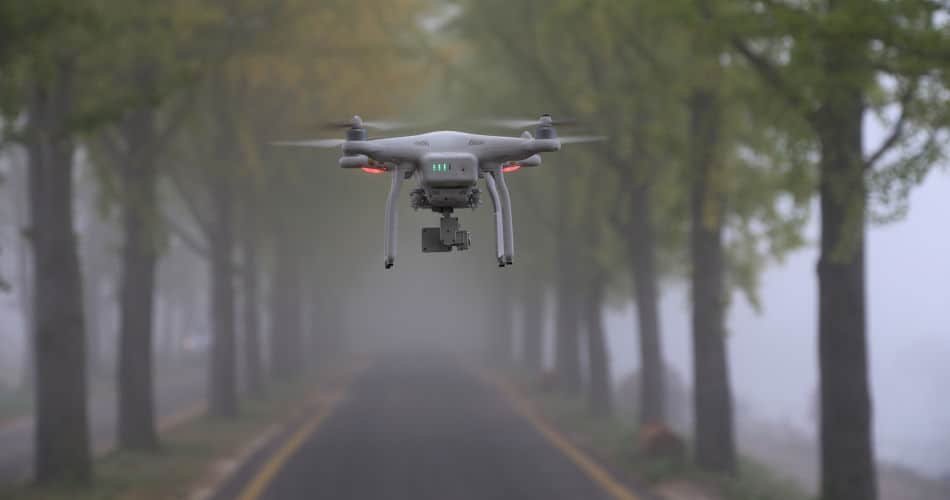Can Dji Drones Fly in Rain. Drones have become integral to our lives and are used for various purposes, from aerial photography to surveillance and recreational flying. However, one question that often arises in the minds of drone enthusiasts is whether DJI drones, known for their quality and performance, can fly in the rain. In this comprehensive guide, we will explore this topic in detail, answering your questions and providing insights into the safety and performance of DJI drones in wet weather conditions.
Can DJI Drones Fly in the Rain?
DJI, a renowned brand in the drone industry, has developed drones with impressive technology and features. While DJI drones are engineered to withstand various weather conditions, flying them in the rain is not recommended. Here’s why:
- Water Damage: DJI drones are not waterproof but are designed to be lightweight and agile. Exposing them to rain or moisture can damage water, affecting their delicate electronic components. Water can infiltrate the drone’s body and cause short circuits, rendering it inoperable. When it comes to finding the perfect Dji Drones Fly in Rain then will VIFLY Drone Strobe Light
be a good option.
- Reduced Visibility: Rain can significantly reduce visibility, making it challenging to operate a drone safely. The moisture on the camera lens can distort the quality of your aerial footage, potentially ruining your shots. Reduced visibility also increases the risk of accidents or collisions with obstacles.
- Safety Concerns: Flying a drone in the rain poses safety risks, not only to the drone itself but also to people and property on the ground. Slippery conditions can make takeoff and landing more challenging, increasing the likelihood of accidents. Moreover, wet conditions can affect the drone’s flight stability, leading to uncontrollable movements.
- Warranty Void: Most DJI drones come with a manufacturer’s warranty that covers various issues. However, flying your drone in the rain may void this warranty, leaving you responsible for any repairs or replacements due to water damage.
What About Light Rain or Drizzle?
While flying a DJI drone in heavy rain is strongly discouraged, some drones can handle light rain or drizzle to some extent. However, it’s essential to exercise caution and follow these guidelines:
- Check Your Drone’s IP Rating: Some DJI drones have an Ingress Protection (IP) rating, indicating their resistance to dust and water. Drones with a higher IP rating (e.g., IPX4) can handle light rain better than those with lower ratings.
- Use Propeller Guards: Propeller guards can help protect your drone from moisture and reduce the risk of water damage during light rain.
- Keep Flight Altitude Low: Flying closer to the ground during light rain can minimize the exposure of your drone to moisture.
- Dry Your Drone Afterward: Dry your drone thoroughly after flying in light rain to prevent any residual moisture from causing damage.
- Monitor Weather Conditions: Keep a close eye on weather conditions, and if rain intensifies, bring your drone down immediately.
FAQS
Can I waterproof my DJI drone?
While some aftermarket waterproofing solutions are available, DJI does not endorse them and may void your warranty. Considering the risks and potential damage before waterproofing your drone is crucial.
Are there any DJI drones specifically designed for wet conditions?
DJI has released the Matrice 300 RTK, which is more rugged and water-resistant than consumer-grade drones. However, even with this drone, there are other options than flying in heavy rain.
How can I protect my drone from rain while flying?
You can use a drone rain cover or a waterproof drone backpack to protect your drone from rain during transportation. These accessories can provide some protection during light rain but are not guaranteed against water damage.
What should I do if my DJI drone gets wet?
If your drone gets wet, immediately power it off, remove the battery, and let it dry completely. Avoid using a hairdryer or applying heat directly, as it can damage the internal components. If you suspect water damage, contact DJI support for guidance.
Conclusion
In conclusion, while DJI drones are known for their durability and advanced features, flying them in the rain is not recommended. Water can cause irreparable damage to your drone’s delicate components, compromise safety, and negatively impact your aerial photography or videography. It’s essential to prioritize the security of your drone and those around you by avoiding wet weather conditions whenever possible. If you find yourself in a situation where you must fly in light rain or drizzle, take precautions, monitor weather conditions, and be prepared to bring your drone down at the first sign of intensifying rainfall. Ultimately, by following these guidelines and respecting your drone’s limitations, you can ensure a longer lifespan and better performance for your DJI drone.

